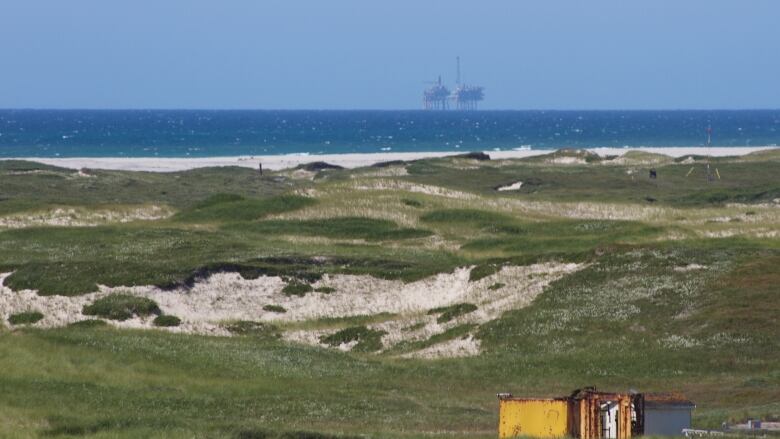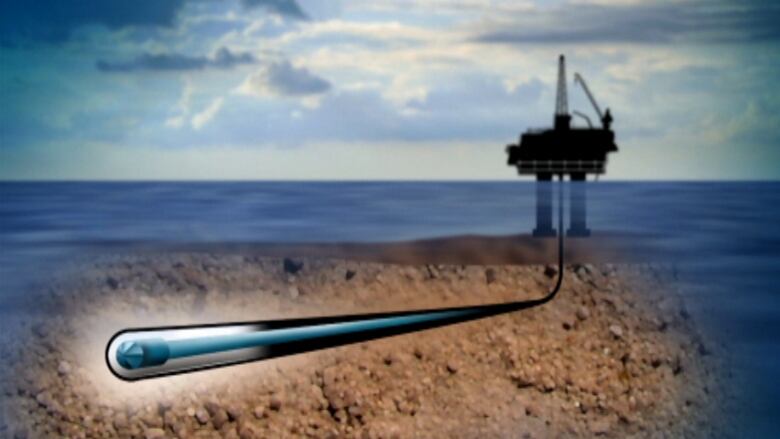Sable Island: An uncertain future as a national park

Could we love Sable Island to death?
That's the question conservationists are confronting as Parks Canada figures out a management plan for the country's newest national park reserve. The five-year clock to sort out a vision for Sable Island began ticking in June 2013, when the bill to turn the island into a national park was enshrined into law.
A national park reserve designation was used because there's an outstanding Mi'kmaq land claim on Sable Island, and the government of Canada has accepted the claims for negotiation. Once the claim is settled, the lands can be converted to a national park.
Mark Butler, the policy director with the Ecology Action Centre, summed it up this way: "A lot of people were concerned that we could love Sable Island to death, that you would just get too many visitors trampling over the island."
But that hasn't happened, at least not yet.
Visitation
All visitors to Sable Island must register with Parks Canada and get permission before they go and the visitor season is limited between the beginning of June and the end of October. People who visit are under tight restrictions:
- Stay away from wildlife: Visitors must stay at least 20 metres away from horses, seals and other wildlife.
- No camping: In addition to camping, beach fires, bonfires and campfires are also prohibited. Pets and firearms are not allowed on the island.
- Respect the island: Visitors must participate in an orientation session and have a detailed itinerary before venturing onto the island.
- Take only pictures, leave only footprints: Everything visitors need must be brought with them and all garbage must be returned to the mainland.
The rules seem to be working so far according to Bill Freedman, an ecology professor at Dalhousie University. Freedman went on two expedition cruise ships to Sable Island this year and said people were "tickled pink" just to be able to visit the island.

"They all really wanted to be there because they had this fascination with the place and they were all extremely responsible in their behaviour and they were well guided by the staff people of the company that ran the cruises and also Parks Canada," he said.
"I see a lot of benefits by having people visit the island and talking to their friends and influencing the way they think. I see many benefits to the conservation of Sable Island as well as to the conservation of the natural world."
Martin Willison, a conservation biologist and the president of the Nova Scotia chapter of the Canadian Parks and Wilderness Society, said his organization is proposing limits on the number of visitors allowed on the island.
The solution may be to bring Sable Island to the people and not the other way around.
"One of the things that myself and friends who are interested think would be a really good thing, would be to get some webcams on the island so that people can visit as it were, in a virtual way, rather than having to go there physically," said Willison.
"The island simply cannot have hundreds of visitors a day like a typical national park. It's absolutely impossible for Sable Island to be able to withstand that type of pressure."
Oil and gas
Sable Island is surrounded by two things: water and natural gas 5,000 metres below the surface. The Canada-Nova Scotia Offshore Petroleum Board estimates there are 85 billion cubic metres of recoverable gas reserves and 11.9 million cubic metres of condensate in the gas fields near Sable Island.
Drilling on the surface of the island is banned, but there is a provision in the legislation that allows for non-drilling petroleum exploration on Sable as long as it's "low impact."
So what constitutes low impact? That hasn't been decided.
Non-drilling exploration methods in the past have included seismic testing, which involves driving trucks on to the beaches, shooting sound waves into the sand and digging listening devices elsewhere to measure the waves.
Off the island, the law prohibits drilling within a zone of one nautical mile, or 1.85 kilometres. But companies can still get at Sable Island's natural gas deposits from outside that zone by drilling horizontally underneath the island.

The Canadian Parks and Wilderness Society believes there should be a ban on all forms of oil and gas exploration on and beneath Sable Island.
"The seas all around Sable are open for oil and gas exploration, so the sliver of sand that is Sable Island should be left alone," says the society's website.
Climate
Sable Island is essentially a sandbar in the middle of the Atlantic Ocean, making it vulnerable to rising sea levels.
Chris Majka, a zoologist and ecologist, said scientists are increasingly thinking the island may disappear by the end of the century.
"It is surprisingly robust, in the sense, that it's lasted so long," he said.
"But all of these unique organisms that are out there and the wonderful history that they tell both of human occupation and of geological history could readily vanish. That is my biggest concern in terms of the future of Sable Island."
Climate change also means more storms. That's not a good thing for Sable Island, said Willison.
"Climate change predictions are and these predictions seem to be holding true that storm frequency and intensity, particularly intensity, will tend to increase," he said.
"Intense storms and sea level rise together are a serious threat to the very existence of Sable Island. That's the thing that we really need to understand."












_(720p).jpg)


 OFFICIAL HD MUSIC VIDEO.jpg)
.jpg)



























































































